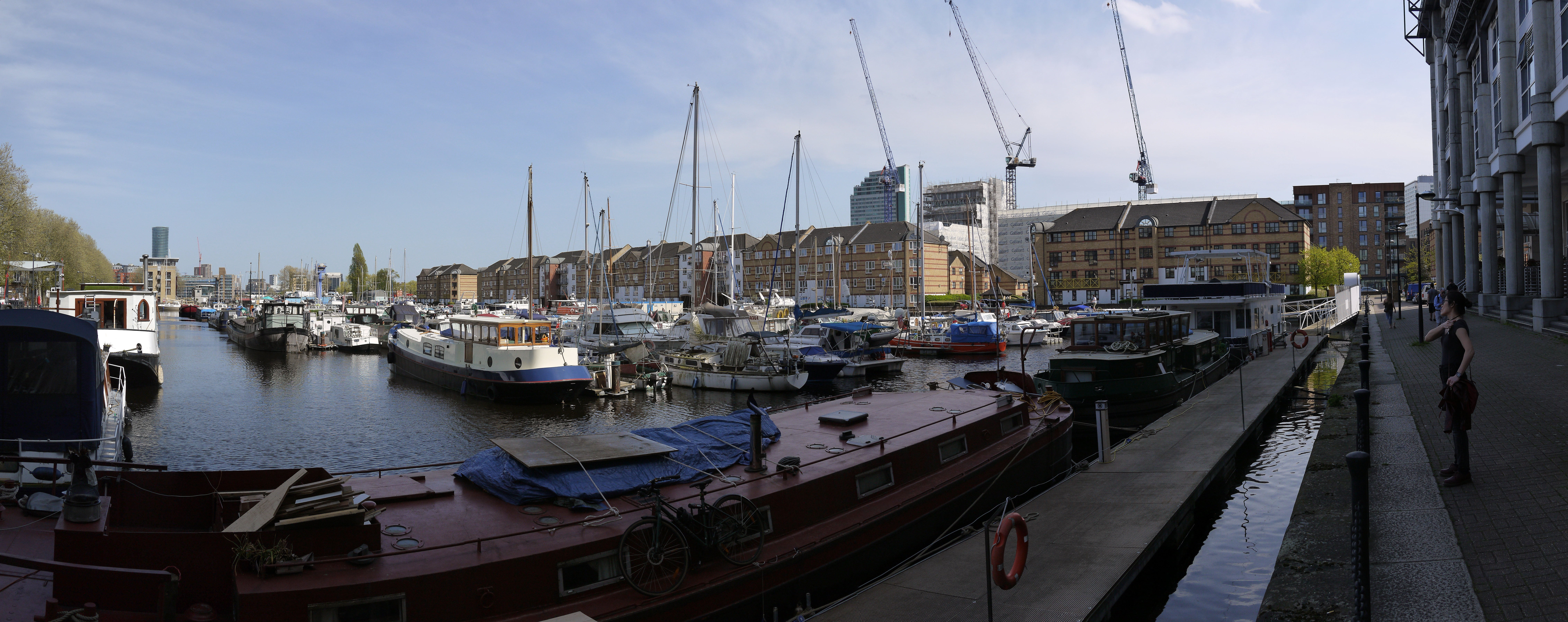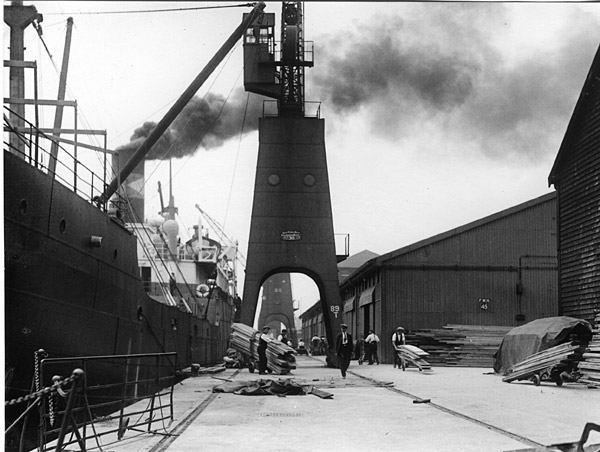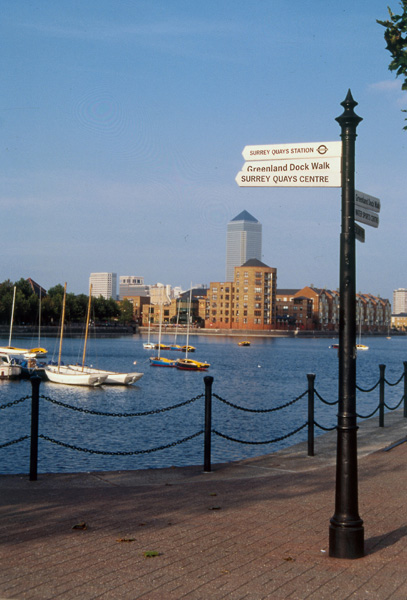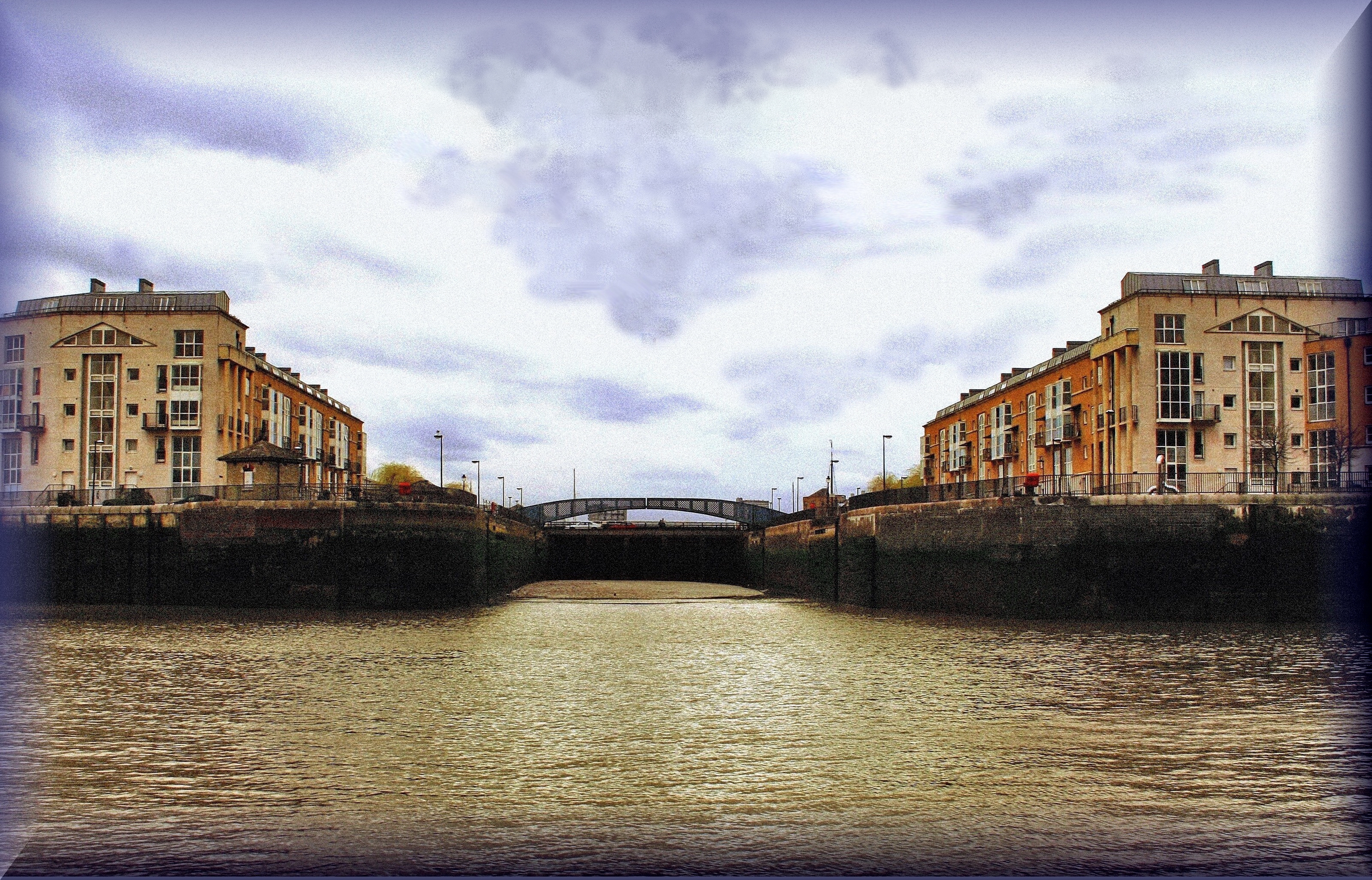Howland Great Wet Dock on:
[Wikipedia]
[Google]
[Amazon]
 Greenland Dock is the oldest of
Greenland Dock is the oldest of
 The dock was originally laid out between 1695 and 1699 on land owned by the aristocratic Russell family of the 1st Duke of Bedford. The Russells had been given a portion of land in lower Rotherhithe by a wealthy Streatham landowner, John Howland, as part of a wedding dowry for his daughter Elizabeth, granddaughter of Sir
The dock was originally laid out between 1695 and 1699 on land owned by the aristocratic Russell family of the 1st Duke of Bedford. The Russells had been given a portion of land in lower Rotherhithe by a wealthy Streatham landowner, John Howland, as part of a wedding dowry for his daughter Elizabeth, granddaughter of Sir
 From the 1720s,
From the 1720s,
 Between 1895 and 1904 Greenland Dock was greatly extended to the west at a cost of £940,000, in a project carried out under Sir
Between 1895 and 1904 Greenland Dock was greatly extended to the west at a cost of £940,000, in a project carried out under Sir

 The Surrey Docks remained derelict for over a decade, with much of the warehousing demolished and over 90% of the docks filled in. Greenland Dock, which now belonged to the local authority, escaped this fate and in 1981 was handed over to the
The Surrey Docks remained derelict for over a decade, with much of the warehousing demolished and over 90% of the docks filled in. Greenland Dock, which now belonged to the local authority, escaped this fate and in 1981 was handed over to the
 The nearest London Underground station is
The nearest London Underground station is
Rotherhithe
London docks Geography of the London Borough of Southwark Port of London Rotherhithe
 Greenland Dock is the oldest of
Greenland Dock is the oldest of London
London is the capital and List of urban areas in the United Kingdom, largest city of England and the United Kingdom, with a population of just under 9 million. It stands on the River Thames in south-east England at the head of a estuary dow ...
's riverside wet docks, located in Rotherhithe
Rotherhithe () is a district of south-east London, England, and part of the London Borough of Southwark. It is on a peninsula on the south bank of the Thames, facing Wapping, Shadwell and Limehouse on the north bank, as well as the Isle of D ...
in the area of the city now known as Docklands. It used to be part of the Surrey Commercial Docks
The Surrey Commercial Docks were a large group of docks in Rotherhithe, South East London, located on the south bank (the Surrey side) of the River Thames.
The docks operated in one form or another from 1696 to 1969. Most were subsequently fi ...
, most of which have by now been filled in. Greenland Dock is now used purely for recreational purposes; it is one of only two functioning enclosed docks on the south bank of the River Thames
The River Thames ( ), known alternatively in parts as the River Isis, is a river that flows through southern England including London. At , it is the longest river entirely in England and the second-longest in the United Kingdom, after the R ...
, along with the smaller South Dock, to which it is connected by a channel now known as Greenland Cut.
History
Howland Great Wet Dock
 The dock was originally laid out between 1695 and 1699 on land owned by the aristocratic Russell family of the 1st Duke of Bedford. The Russells had been given a portion of land in lower Rotherhithe by a wealthy Streatham landowner, John Howland, as part of a wedding dowry for his daughter Elizabeth, granddaughter of Sir
The dock was originally laid out between 1695 and 1699 on land owned by the aristocratic Russell family of the 1st Duke of Bedford. The Russells had been given a portion of land in lower Rotherhithe by a wealthy Streatham landowner, John Howland, as part of a wedding dowry for his daughter Elizabeth, granddaughter of Sir Josiah Child
Sir Josiah Child, 1st Baronet, , (c. 1630/31 – 22 June 1699) was an English economist, merchant and politician. He was an economist proponent of mercantilism and governor of the East India Company. He led the company in the Anglo-Mughal War. ...
– the dictatorial chairman of the East India Company
The East India Company (EIC) was an English, and later British, joint-stock company founded in 1600 and dissolved in 1874. It was formed to trade in the Indian Ocean region, initially with the East Indies (the Indian subcontinent and South ...
, who married Wriothesley Russell, the Marquis of Tavistock. They immediately set about "improving" the rural property, obtaining parliamentary permission in 1695 to construct a rectangular dock with an area of about , capable of accommodating around 120 ships. It was named Howland Great Wet Dock in honour of John Howland. Designed by local shipwright, John Wells, the dock was intended to refit East India ships.
In a picture of about 1717, it can be seen in a rural setting some miles outside the (much smaller) city of London, lined with trees on three sides (to act as windbreaks) and with the Russell family's mansion situated at the western end. Unlike the later docks, it was not built with cargo traffic
Freight transport, also referred as ''Freight Forwarding'', is the physical process of transporting commodities and merchandise goods and cargo. The term shipping originally referred to transport by sea but in American English, it has been ext ...
in mind; it did not have walls, warehouse
A warehouse is a building for storing goods. Warehouses are used by manufacturers, importers, exporters, wholesalers, transport businesses, customs, etc. They are usually large plain buildings in industrial parks on the outskirts of cities ...
s or other commercial facilities. Instead, it was promoted as being capable of accommodating ships "without the trouble of shifting, mooring
A mooring is any permanent structure to which a vessel may be secured. Examples include quays, wharfs, jetties, piers, anchor buoys, and mooring buoys. A ship is secured to a mooring to forestall free movement of the ship on the water. An ''an ...
or unmooring any in the dock for taking in or out any other". It was essentially a re-fitting base where ships could be repaired and berthed in a sheltered anchorage. It was aided in this regard by its proximity to the dockyards at Deptford
Deptford is an area on the south bank of the River Thames in southeast London, within the London Borough of Lewisham. It is named after a Ford (crossing), ford of the River Ravensbourne. From the mid 16th century to the late 19th it was home ...
.
Whaling and timber trades
 From the 1720s,
From the 1720s, Greenland
Greenland ( kl, Kalaallit Nunaat, ; da, Grønland, ) is an island country in North America that is part of the Kingdom of Denmark. It is located between the Arctic and Atlantic oceans, east of the Canadian Arctic Archipelago. Greenland i ...
whalers also used the dock and substantial blubber boiling houses were built to produce oil on the south side. Howland Great Wet Dock was sold by the fourth Duke of Bedford in 1763. Extensive usage by the Greenland whaling ship
A whaler or whaling ship is a specialized vessel, designed or adapted for whaling: the catching or processing of whales.
Terminology
The term ''whaler'' is mostly historic. A handful of nations continue with industrial whaling, and one, Jap ...
s prompted the dock to be renamed ''Greenland Dock''. However, this trade declined sharply by the start of the 19th century.
In 1806 the dock was sold to William Richie, a Greenwich
Greenwich ( , ,) is a town in south-east London, England, within the ceremonial county of Greater London. It is situated east-southeast of Charing Cross.
Greenwich is notable for its maritime history and for giving its name to the Greenwich ...
timber merchant and founder of the Commercial Dock Company (1807). The Company built a series of additional docks and two new timber ponds to the north while rival companies built additional docks, leading to the jumble of harbours, canals and timber ponds. In 1865, the company merged with the neighbouring Surrey Docks to form the Surrey Commercial Docks
The Surrey Commercial Docks were a large group of docks in Rotherhithe, South East London, located on the south bank (the Surrey side) of the River Thames.
The docks operated in one form or another from 1696 to 1969. Most were subsequently fi ...
, controlling some 80% of London's timber trade.
Greenland Dock remained at the centre of London's timber trade for well over a century to come. It was lined with warehouses and immense piles of construction timber or " deal wood", which were maintained by the athletic deal porters
The deal porters were a specialist group of workers in London's docks. They handled baulks of softwood or "deal", stacking them up to 60 feet (18 m) high in quayside warehouses. This was a demanding and dangerous job. It required physical streng ...
. Much of the timber arrived aboard small sailing vessels from the Baltic region, although these were eventually displaced by large steamers.
Expansion and decline
 Between 1895 and 1904 Greenland Dock was greatly extended to the west at a cost of £940,000, in a project carried out under Sir
Between 1895 and 1904 Greenland Dock was greatly extended to the west at a cost of £940,000, in a project carried out under Sir John Wolfe Barry
Sir John Wolfe Barry (7 December 1836 – 22 January 1918), the youngest son of famous architect Sir Charles Barry, was an English civil engineer of the late 19th and early 20th century. His most famous project is Tower Bridge over the River ...
, the engineer who built Tower Bridge
Tower Bridge is a Grade I listed combined bascule and suspension bridge in London, built between 1886 and 1894, designed by Horace Jones and engineered by John Wolfe Barry with the help of Henry Marc Brunel. It crosses the River Thames clos ...
. More than doubling in length and nearly doubling in depth, in its final form it covered an area of , with a depth of and a length of , which cut straight across the old Grand Surrey Canal
The Grand Surrey Canal was a canal constructed in south London, England during the early 19th century. It opened to the Old Kent Road in 1807, to Camberwell in 1810, and to Peckham in 1826. Its main purpose was to transport cargo, primarily ti ...
. It was also given a large lock, long, wide and deep. This renovation enabled the dock to take large cargo ships and even ocean-going liners. Cunard Line A-class vessels of as much as , driven by large steam engines and carrying passengers and cargoes in both directions, sailed regularly from Greenland Dock to the St. Lawrence River
The St. Lawrence River (french: Fleuve Saint-Laurent, ) is a large river in the middle latitudes of North America. Its headwaters begin flowing from Lake Ontario in a (roughly) northeasterly direction, into the Gulf of St. Lawrence, connecting ...
in Canada
Canada is a country in North America. Its ten provinces and three territories extend from the Atlantic Ocean to the Pacific Ocean and northward into the Arctic Ocean, covering over , making it the world's second-largest country by tot ...
. They were considered huge ships for so far upstream and they had to be swung round in the river to enter the lock.
In 1909 the dock, along with all of the other London docks, was amalgamated into the Port of London
The Port of London is that part of the River Thames in England lying between Teddington Lock and the defined boundary (since 1968, a line drawn from Foulness Point in Essex via Gunfleet Old Lighthouse to Warden Point in Kent) with the North Se ...
under the management of the Port of London Authority.
In the same era as the big steamships there were, by contrast, the barques and barquentines of less than a tenth the size that brought timber from Finland: survivors of the age of sail with three or more masts and representatives of the Baltic side of the timber trade. Finland Quay, Swedish Quay, Norway Dock and Russia Dock were some of the names arising from what had been the original part of Rotherhithe's timber trade.
Greenland Dock suffered greatly during World War II
World War II or the Second World War, often abbreviated as WWII or WW2, was a world war that lasted from 1939 to 1945. It involved the vast majority of the world's countries—including all of the great powers—forming two opposing ...
, when many of the warehouses were razed by German
German(s) may refer to:
* Germany (of or related to)
** Germania (historical use)
* Germans, citizens of Germany, people of German ancestry, or native speakers of the German language
** For citizens of Germany, see also German nationality law
**Ge ...
bombing and the great lock was rendered unusable due to bomb damage. It soon recovered after the war and enjoyed a brief resurgence of prosperity. However, technological changes in the shipping industry soon pushed the dock into a spiral of decline. The deal porters' jobs were abolished from 1958 when timber started to be packaged. Not long afterwards, the shipping industry moved ''en masse'' to the system of containerization
Containerization is a system of intermodal freight transport using intermodal containers (also called shipping containers and ISO containers). Containerization is also referred as "Container Stuffing" or "Container Loading", which is the p ...
, which required bulk carriers far too large to be accommodated in the London docks. In 1970, the Surrey Commercial Docks were closed. Greenland Dock was sold to Southwark council.
{{clearleft
Redevelopment

 The Surrey Docks remained derelict for over a decade, with much of the warehousing demolished and over 90% of the docks filled in. Greenland Dock, which now belonged to the local authority, escaped this fate and in 1981 was handed over to the
The Surrey Docks remained derelict for over a decade, with much of the warehousing demolished and over 90% of the docks filled in. Greenland Dock, which now belonged to the local authority, escaped this fate and in 1981 was handed over to the London Docklands Development Corporation
The London Docklands Development Corporation (LDDC) was a quango agency set up by the UK Government in 1981 to regenerate the depressed Docklands area of east London. During its seventeen-year existence it was responsible for regenerating an a ...
. During this period the Inner London Education Authority
The Inner London Education Authority (ILEA) was an ad hoc local education authority for the City of London and the 12 Inner London boroughs from 1965 until its abolition in 1990. The authority was reconstituted as a directly elected body corp ...
ran a Surrey Docks Watersports Centre on the dock from a series of portable cabins at the Redriff Road end of the dock. It was at this centre many young people who would not have been exposed to sailing or canoeing were trained.
A masterplan was produced that advocated evicting the remaining industrial occupiers of the quaysides and transforming the dock into a residential area. This went ahead in the late 1980s despite some controversy, with seven residential developments being constructed on the site of the former warehouse complexes (and named after them; hence Swedish Yard became Swedish Quay, Brunswick Yard became Brunswick Quay, Baltic Yard became Baltic Quay
Baltic Quay is a large residential development, located in Surrey Quays in the London Borough of Southwark. Completed in 1989 during the London Docklands Development Corporation, it is largely known for its unique architecture, which won it award ...
and so on). Today the area is dominated by luxury residential developments, such as the Greenland Passage development and the gated New Caledonian Wharf. Additionally, a new watersports centre was constructed on the site of the former entrance to the now infilled Grand Surrey Canal. This has maintained the dock as a popular site for sailing, windsurfing, canoeing and dragon boat racing.
The dock itself is still substantially intact, other than its former entrances and exits, all but one of which have been filled in or blocked. It still has a working connection to South Dock, which is now a marina, and it has a small marina of its own at its eastern end. There are no traces of the former warehouses, although many of the old capstans and some of the hydraulic machines on the quayside have been preserved.
The alternative comedian Malcolm Hardee
Malcolm Hardee (5 January 1950 – 31 January 2005) was an English comedian and comedy club proprietor.
His high reputation among his peers rests on his outrageous publicity stunts and on the help and advice he gave to successful British Altern ...
drowned in the dock in 2005 while stepping onto his houseboat, ''Sea Sovereign'', from the floating pub he owned, the ''Wibbley Wobbley'', which was moored at the Thames end of Greenland Dock.
Transport
 The nearest London Underground station is
The nearest London Underground station is Canada Water
Canada Water is an area of the Docklands in south-east London. It is named after a freshwater lake and wildlife refuge. Canada Water tube, Overground and bus station is immediately north of the lake, along with Canada Water Library which ov ...
on the Jubilee line
The Jubilee line is a London Underground line that runs between in east London and in the suburban north-west, via the Docklands, South Bank and West End. Opened in 1979, it is the newest line on the Underground network, although some secti ...
. The nearest London Overground stations are Surrey Quays
Surrey Quays is a largely residential area of Rotherhithe in south-east London, occupied until 1970 by the Surrey Commercial Docks. Previously known as Surrey Docks, the area was renamed following the construction of the Surrey Quays shopping ce ...
and Canada Water.
Thames Clippers' water-bus serves Greenland Pier
Greenland (Surrey Quays) Pier is a pier on the River Thames in London, United Kingdom. It is situated at the eastern end of Greenland Dock in the London Borough of Southwark, and is a stop on the Thames commuter catamaran service.
Services
Gre ...
. The Thames Path
The Thames Path is a National Trail following the River Thames from its source near Kemble in Gloucestershire to the Woolwich foot tunnel, south east London. It is about long. A path was first proposed in 1948 but it only opened in 1996.
The ...
passes along the southern bank of the River Thames
The River Thames ( ), known alternatively in parts as the River Isis, is a river that flows through southern England including London. At , it is the longest river entirely in England and the second-longest in the United Kingdom, after the R ...
.
Nearby places
*Canada Water
Canada Water is an area of the Docklands in south-east London. It is named after a freshwater lake and wildlife refuge. Canada Water tube, Overground and bus station is immediately north of the lake, along with Canada Water Library which ov ...
*Russia Dock Woodland
Russia Dock Woodland is a long narrow park in Rotherhithe, London, created by the infilling of one of the former Surrey Commercial Docks. The former Russia Dock was originally used for the importing of softwood timber from Norway, Russia and Swe ...
* South Dock
*Surrey Quays
Surrey Quays is a largely residential area of Rotherhithe in south-east London, occupied until 1970 by the Surrey Commercial Docks. Previously known as Surrey Docks, the area was renamed following the construction of the Surrey Quays shopping ce ...
Further reading
*''Shipbuilding in Rotherhithe – Greenland Dock & Barnard's Wharf'' by Stuart Rankin, Bib Id 482821 *''Shipbuilding in Rotherhithe – An historical introduction'' by Stuart Rankin, Bib Id 488375, pp. 5–6External links
*John Butler's Landscape Photography page oRotherhithe
London docks Geography of the London Borough of Southwark Port of London Rotherhithe